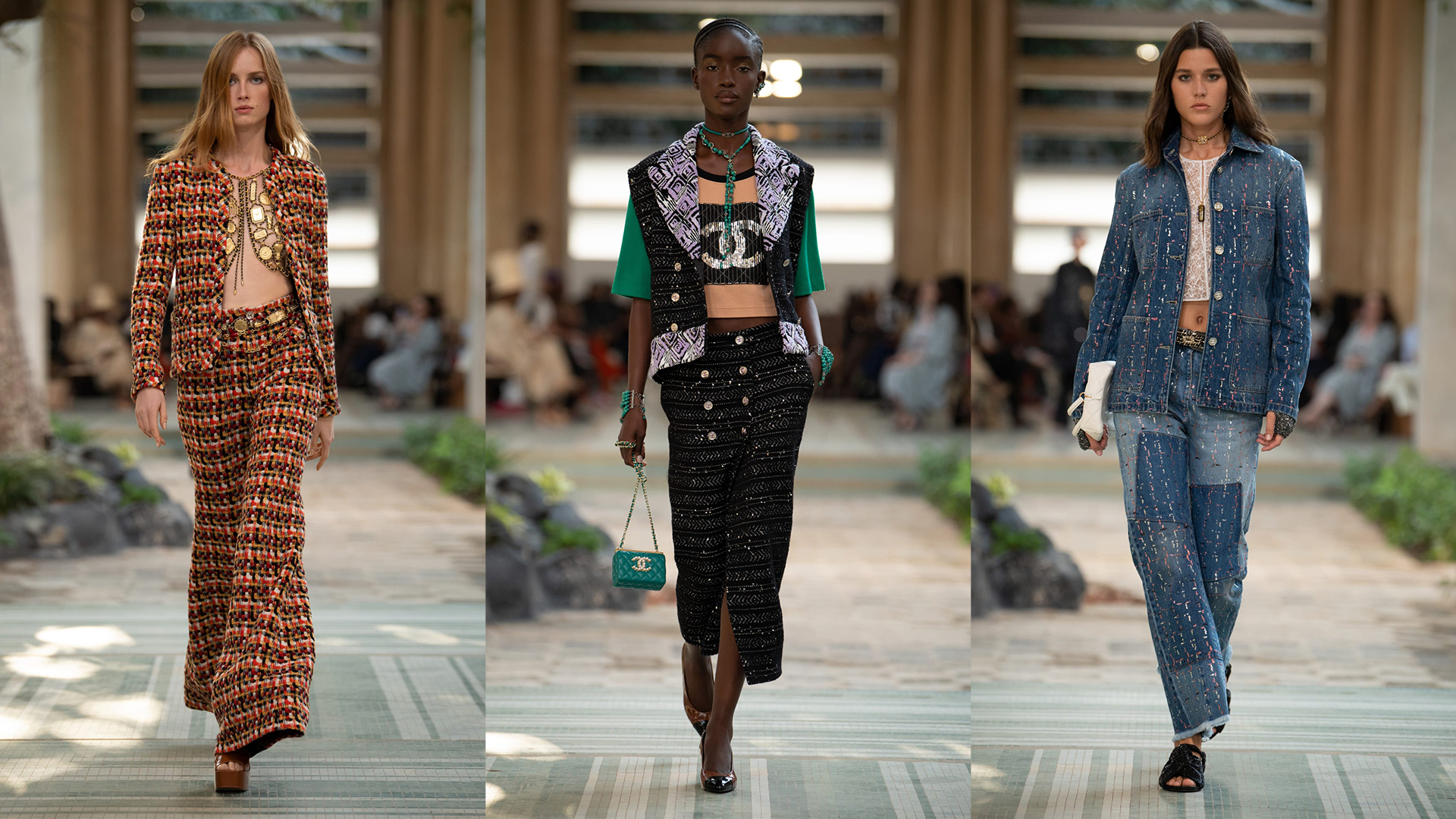When it was announced back in June that Chanel would present its first-ever show in Dakar, the coastal capital of Senegal, there was inevitable scepticism about how the first show to be presented by any European or US house in Sub-Saharan Africa would look. Fashion has a long, complex history of colonial missteps, both in the historical canon of its aesthetics and infrastructures. Eyebrows were raised and questions were asked: Who would benefit the most from the show, the fashion house or local creatives? Would VIPs be flown in and hidden behind the polished glare of blacked-out limos? Most importantly, would Dakar simply provide a vibrant backdrop for an Africa-themed collection, full of sartorial clichés?
Thankfully, with all eyes on Chanel, its answer to all of those questions was a resounding “Non!”.
Right from when the beginning of when Chanel began considering a show in Dakar — which, according to creative director Virginie Viard was in 2019, before the global pandemic — it was paramount that this show provide a blueprint of how fashion houses should approach ubiquitous “on location” shows. This year alone, there have been more far-flung shows than in the heady pre-Covid times — from Marrakesh to Puglia, Cairo to Monaco —and it shows no sign of slowing down. However, the question facing fashion houses right now is not whether they should be doing travelling shows — as long as borders are open, they will —but how can they do them in a way that genuinely engages with a local culture and its community?
For Chanel, it took three years of carefully planning a week of cultural exchanges. Given that this would be one of the house’s métiers d’art shows — a showcase of the technical wizardry of Chanel-owned le19M ateliers, sitting somewhere between ready-to-wear and haute couture — it made sense to do it in Dakar because of the city’s longstanding reputation as a centre for craftsmanship, textiles and culture. They started by inviting local creatives and writers into the fold of the house, commissioning them to be a part of the show and spotlighting them through their platforms. “Going beyond the runway show, it’s the event as a whole that I took into account,” said Virginie. “We’ve been thinking about it for three years. I wanted it to happen gently, over several days of deep, respectful dialoguing,” she added.

For many guests from out of town, one of the first stops on the cultural tour was to Gorée Island, the 900-metre-long island off the coast of Dakar that was once the point of no return for the millions of enslaved people who left its shores. It was here that the cultural guide made a potent statement: history should be remembered, as much as the future should be considered. The Chanel itinerary began at the tailend of Dakar Fashion Week, and the response of many of the young designers and creatives who were a part of that week-long schedule were enthusiastic about what this means for Senegal, and Africa as a whole – that it is just as much a fashion capital as London, Paris or Milan.
For Chanel’s programme of events, the former Palais de Justice (now home to Dakar’s art biennial) served as the central hub for the various talks, salons, workshops, as well as the show itself. On the day, dancers from the the École des Sables, an international training and creation centre for traditional and contemporary African dance founded by Germaine Acogny, opened the show with a joyous parade led by Obree Daman and his choir, filling the mid-century space with infectious rhythm. The night before, Senegalese rapper Nix played to a crowd who had just listened to a “literary rendezvous” between novelist Marie NDiaye, Charlotte Casiraghi, and Rokhaya Niang — and elsewhere Pharrell took to the stage to address an audience of students from local colleges, reflecting on the significance of the occasion and inevitably dolling out style advice.
Most importantly, however, Chanel’s President Bruno Pavlovsky announced a series of longer-term committments between Chanel’s le19M and Dakar’s IFAN Museum of African Arts that will see exchanges of artisanal expertise between the two. The idea is to place African craft within the same rarefied halo as those in the Chanel-owned ateliers that responsible for the house’s métier’s d’art collections: Lesage, Massaro, Lemarié, Michel, Lognon, Goossens, et al. It was a radical statement on Chanel’s part about how serious it is about its Paris-Dakar connection.
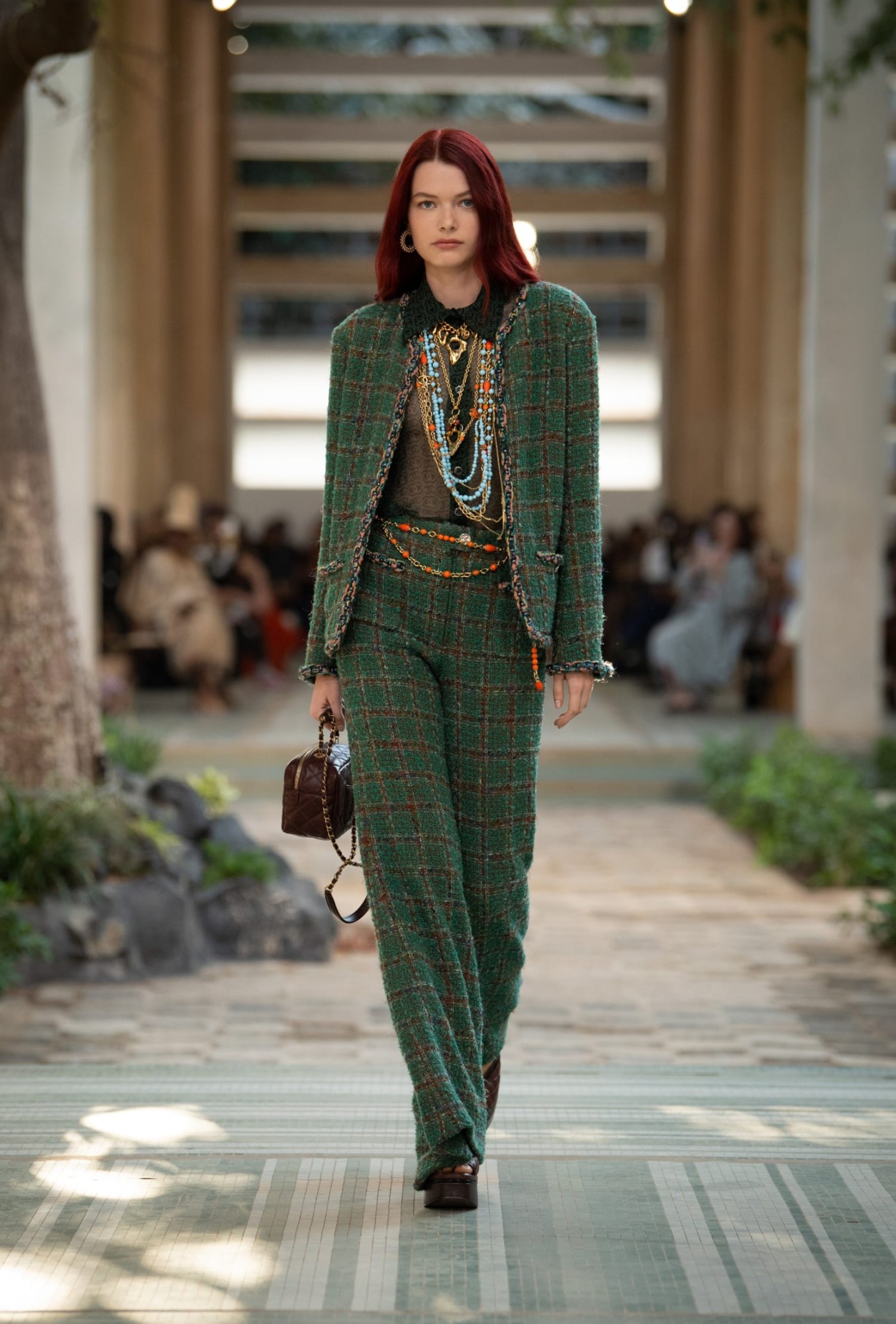
Tweed suits opened the show — of course! Yet, in lieu of A-line skirts and pearls were long, flared trousers and ropes of coral and geometrically-arranged wooden beads. A knitted rugby top came with a sequinned double-C monogram that could have been lifted from the bootlegged iterations in dakar’s markets, while colourful, textured fabrics, often with panels of beading were the result of the le19M’s technical wizardry — all of which felt intentional as colourful and eclectic as the displays of traditional African dress in the audience. Russety ochres, tangerines, parakeet greens and chocolate browns hinted at the 70s-flavoured insouciance that Virgine cited as inspiration, perhaps also thinking about the iconic photography of Malick Sidibé and the vibrant dandyism of Congo’s ‘Sapeur’ subculture.
However, the references were worn lightly — and perhaps the most significant thing about the collection was that it avoided visual clichés, while capturing a sense of the continent’s flair. A puckered bouclé coat, for instance, was speckled with hints of the red, green and yellow of the Senegalese flag, while African drums became chain charms and the distinctive shape of the continent was sculpted into chunky gold cuffs and pendants. The heavyweight, commando-soled shoes that finished each look had an air of “uncle shoes” to them, but only to the knowing eye.
Really, though, it was off the catwalk — in the audience of predominently West African guests — that some of the freshest iterations of Chanel could be seen. It was one of the best-dressed audiences of any show — as Pharrell was enthusiastically pointing out to each guest. Dakar Fashion Week’s founder, Adama Ndiaye, arrived in robes of shocking-pink silk with Chanel brooches pinned to her headwrap and dangling across her backless bustier. Accra-based designer Abrima Erwiah had chanel chains and logo pendants draped around her tricorn of braids. Many guests accessories their traditional robes and kente cloth with Chanel accessories: sunglasses, jewellery, bags. It brought the message full circle. Chanel may have come to Africa for the first time, but there are legions of African fashion devotees and clients here who have long admired the brand. As a result, the show had an air of celebration — in many ways, it felt like a homecoming.
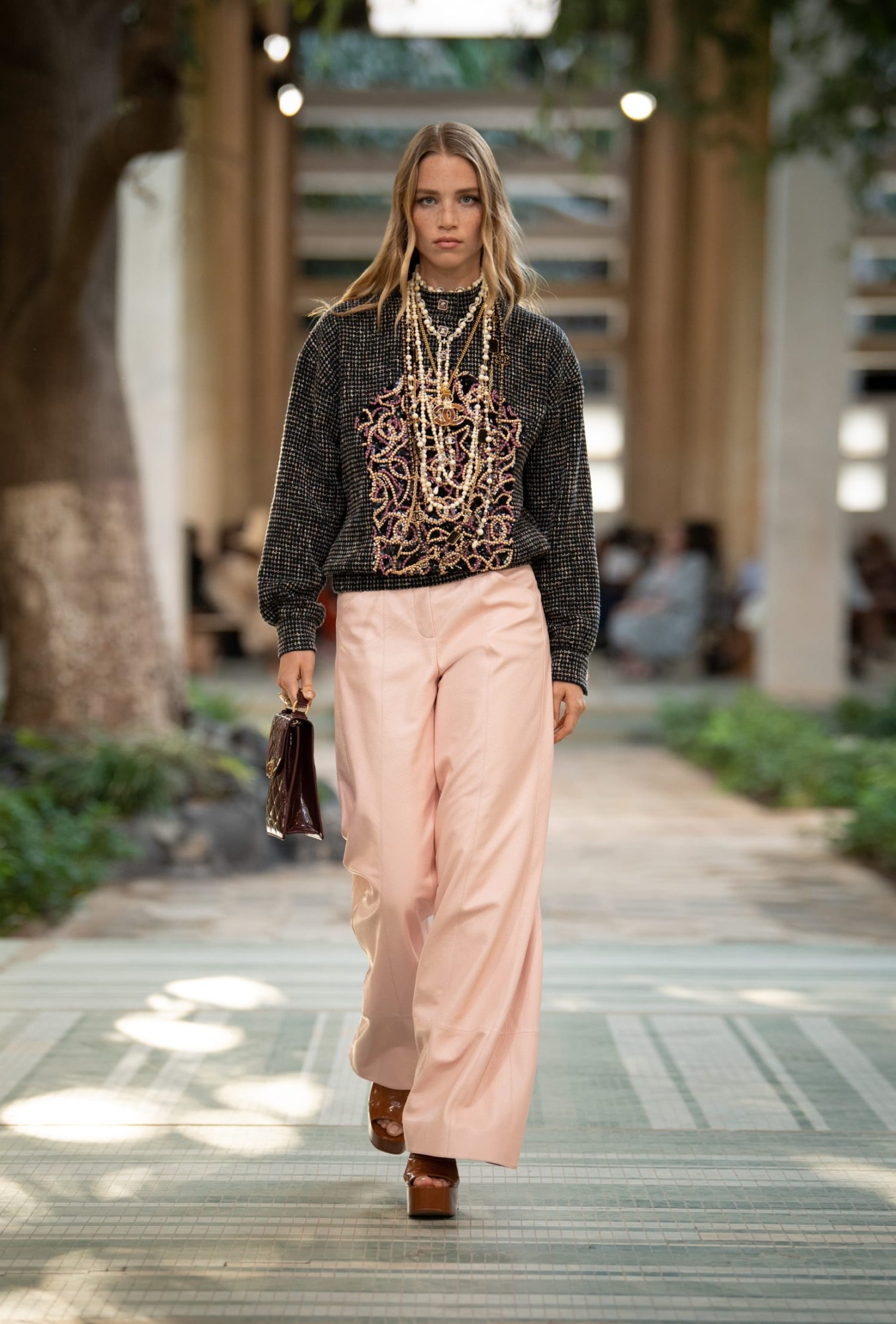
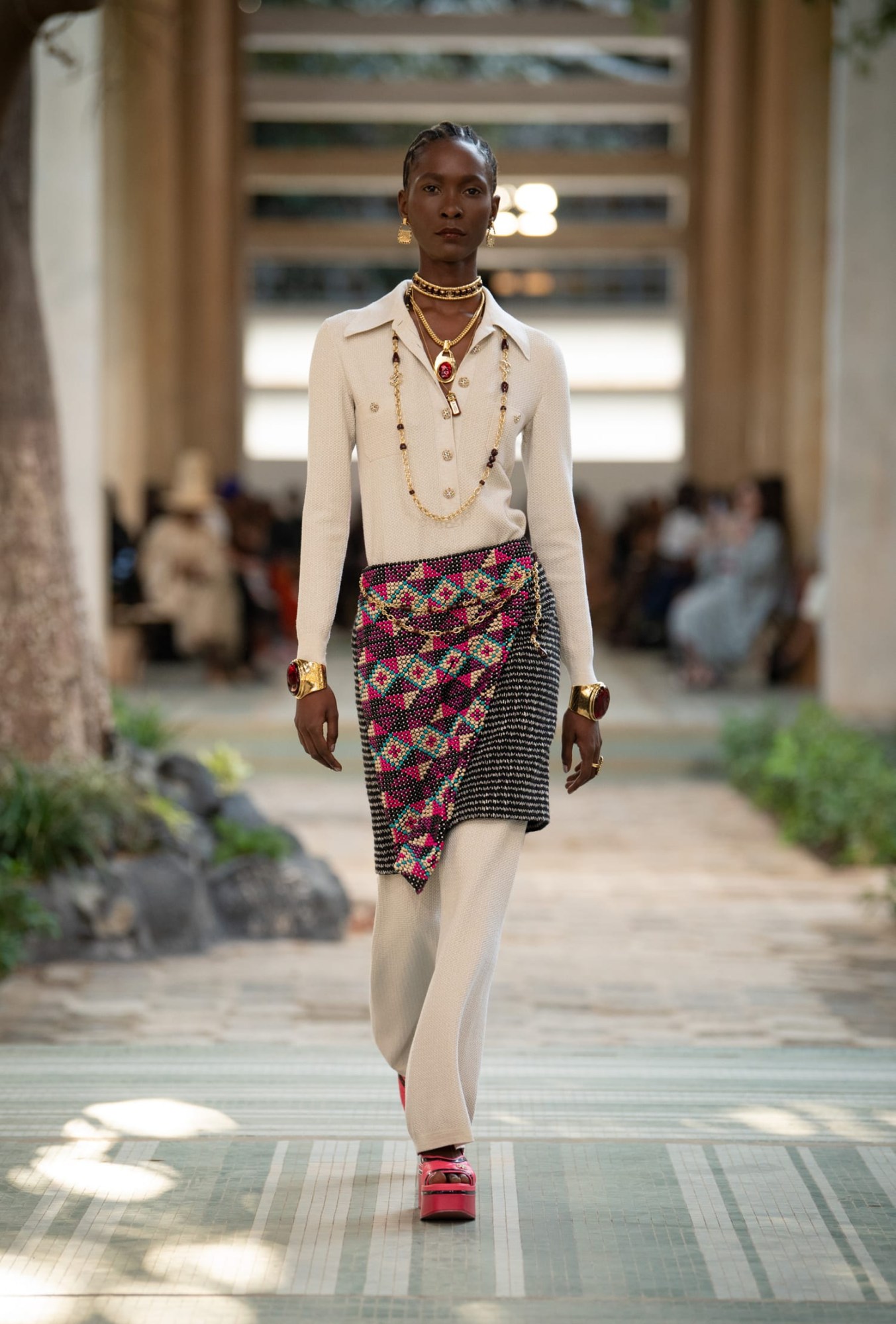
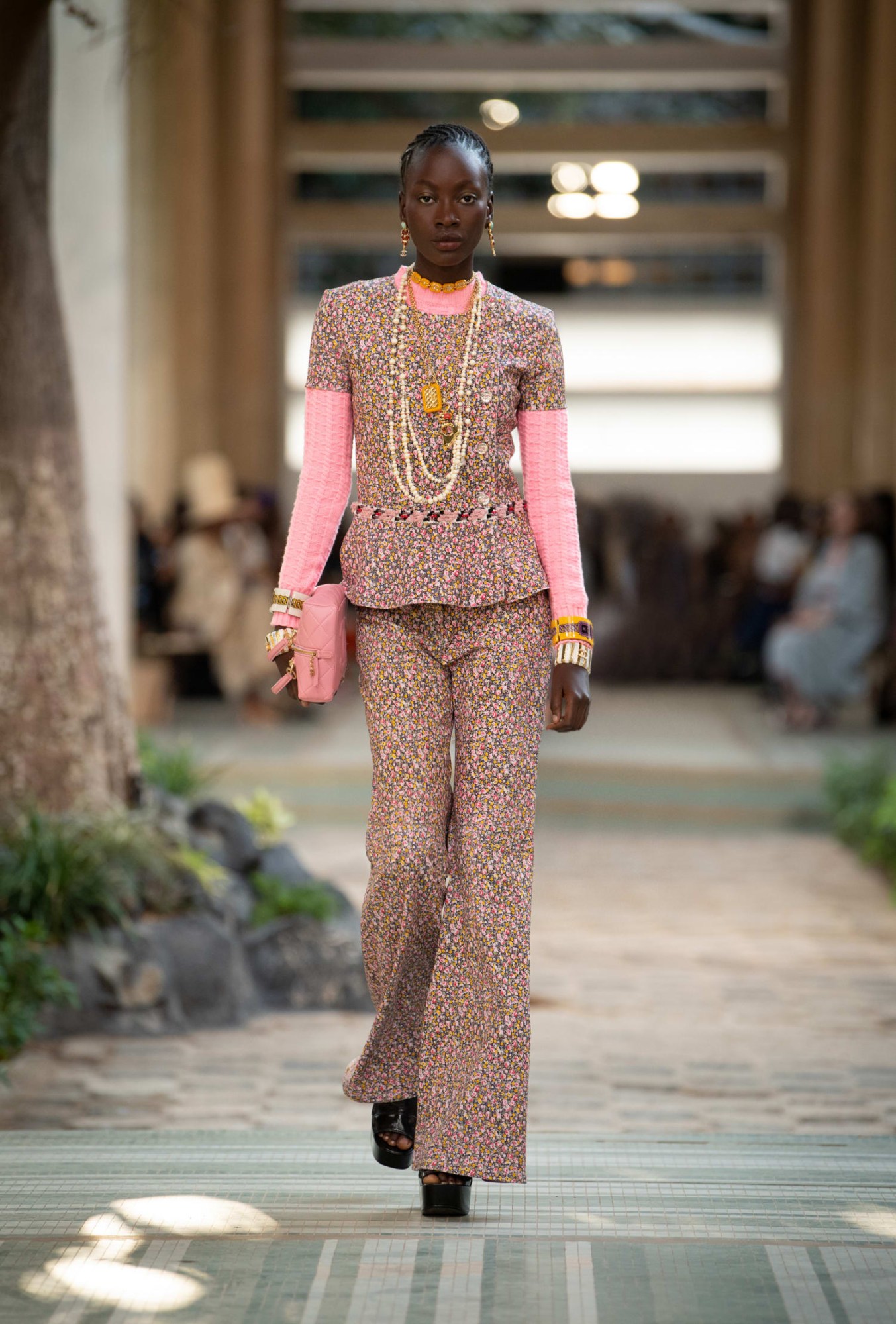
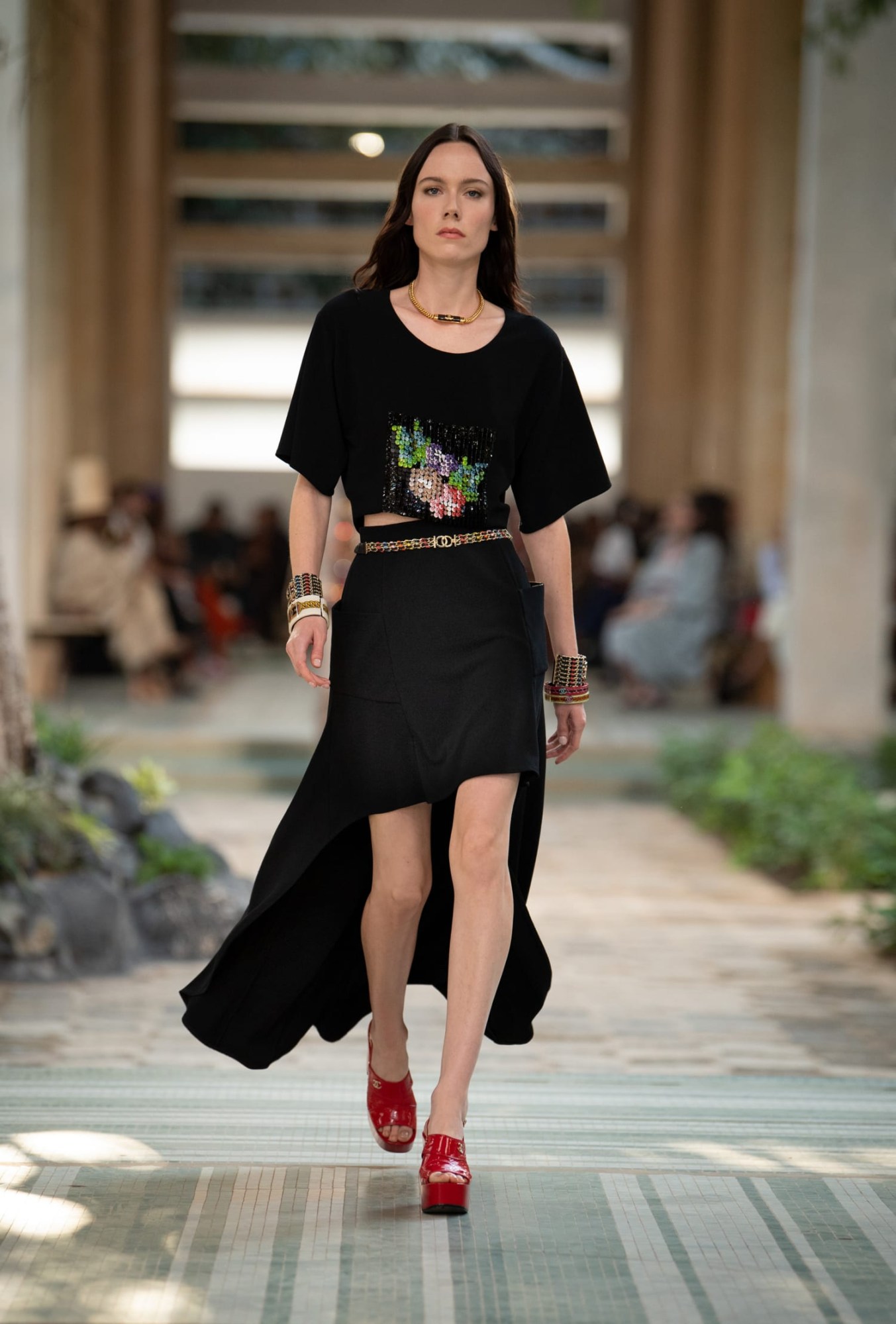
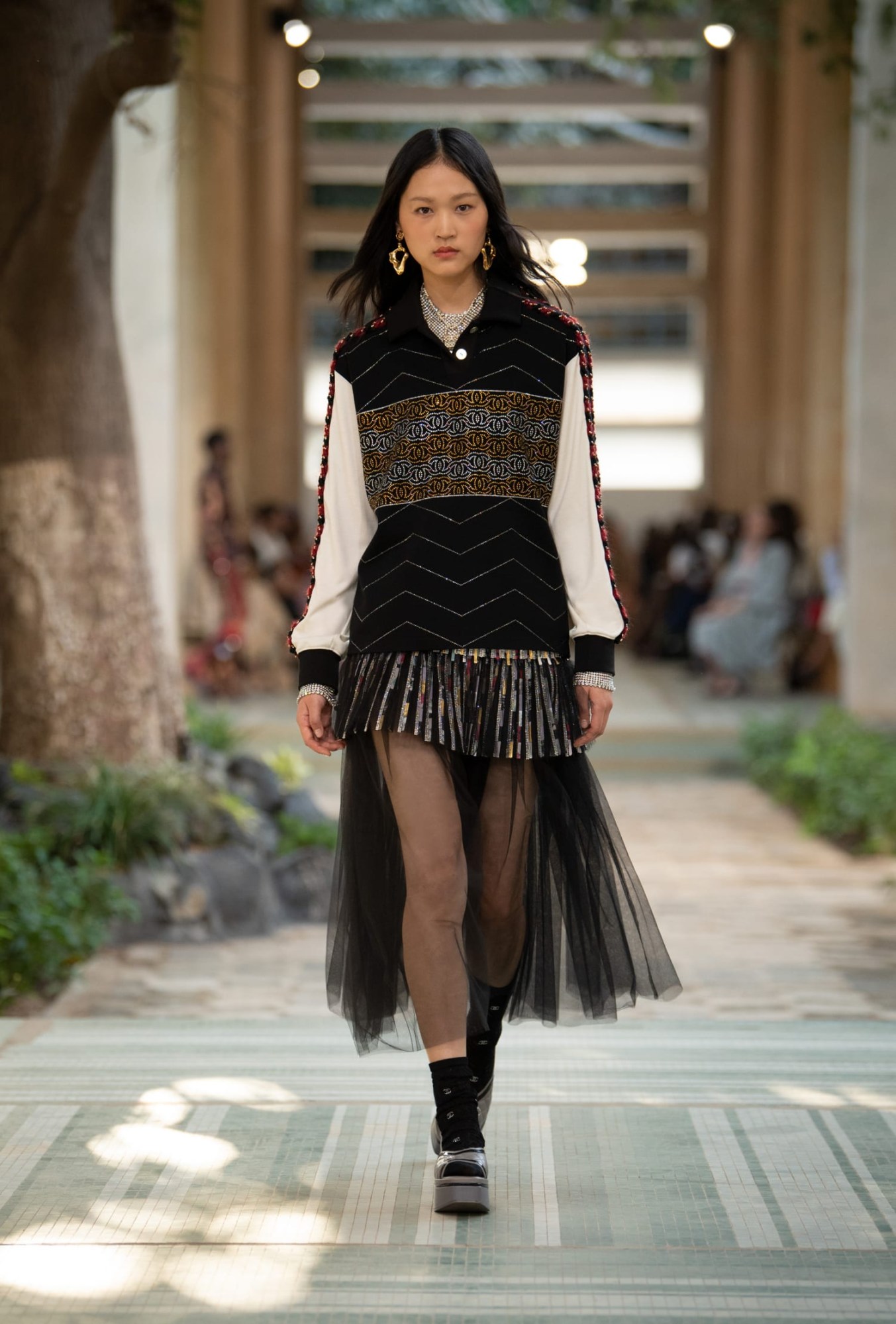
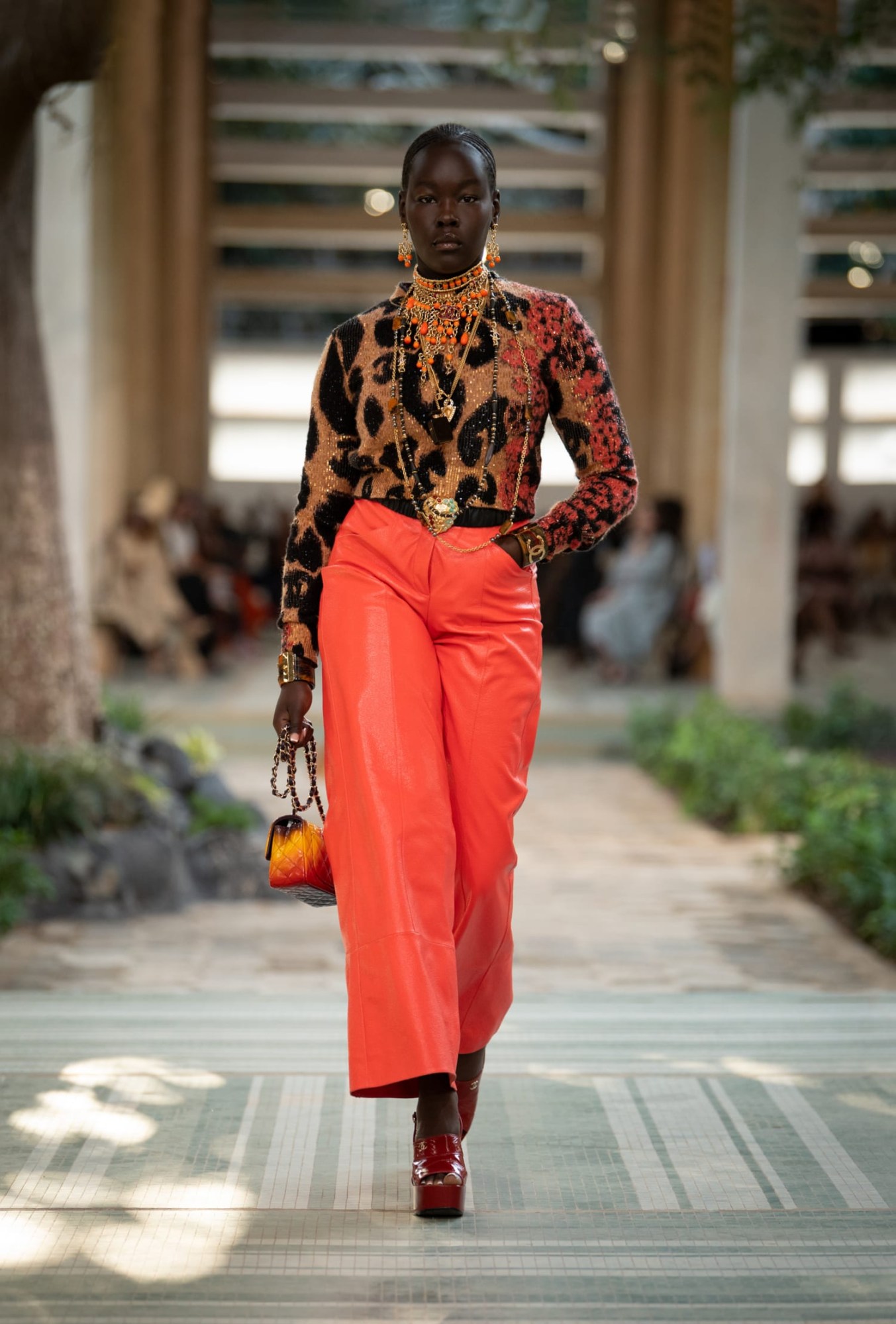
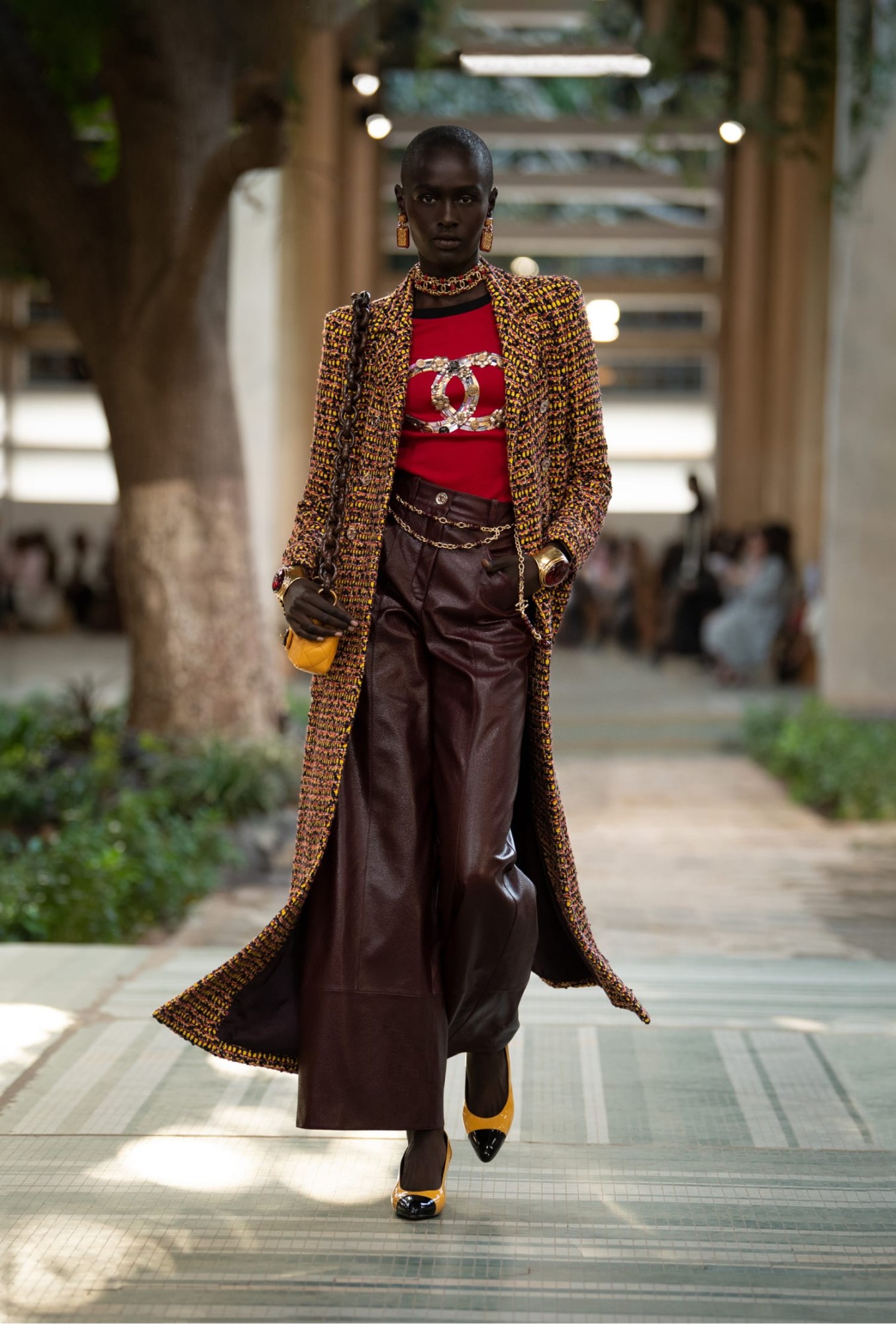

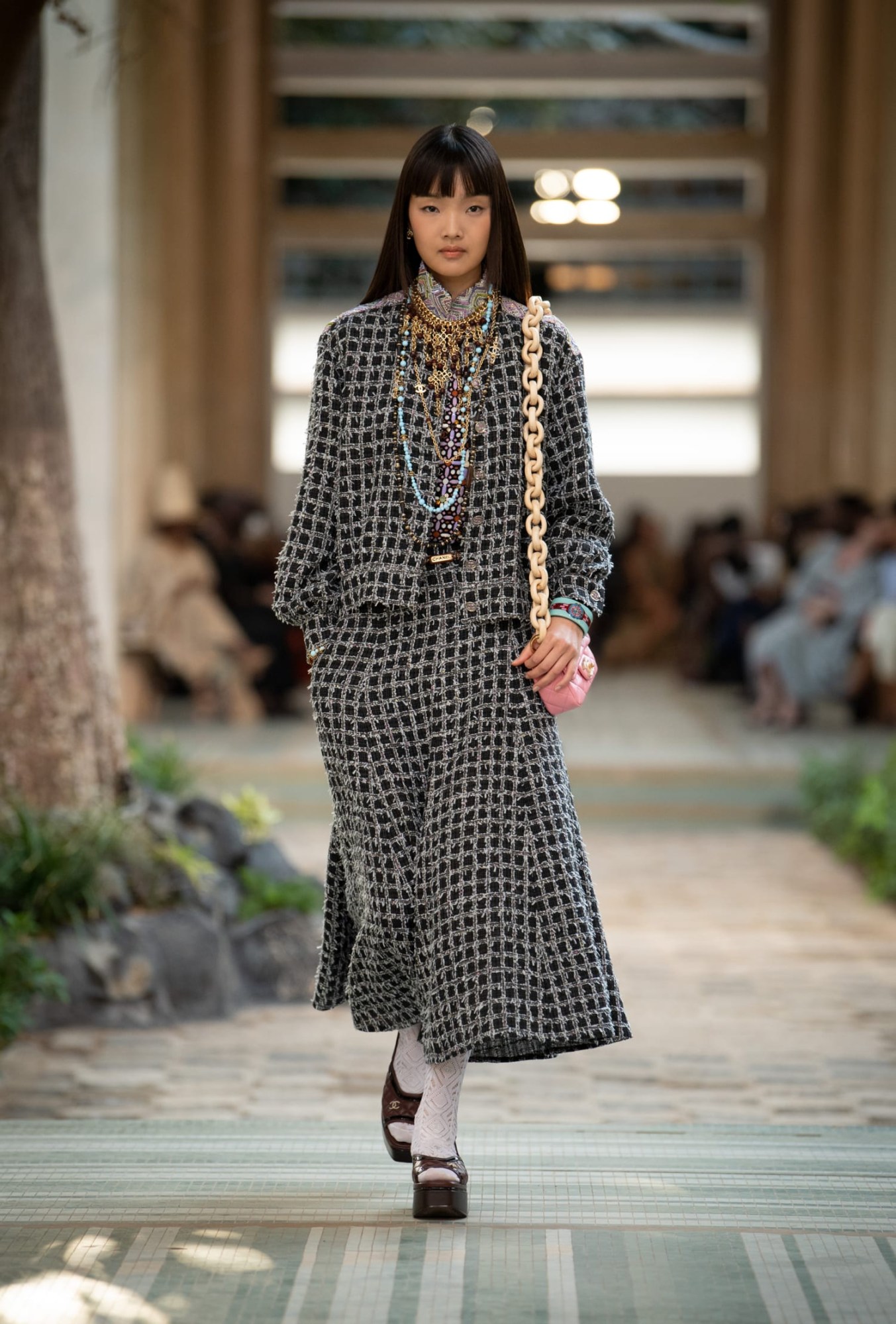

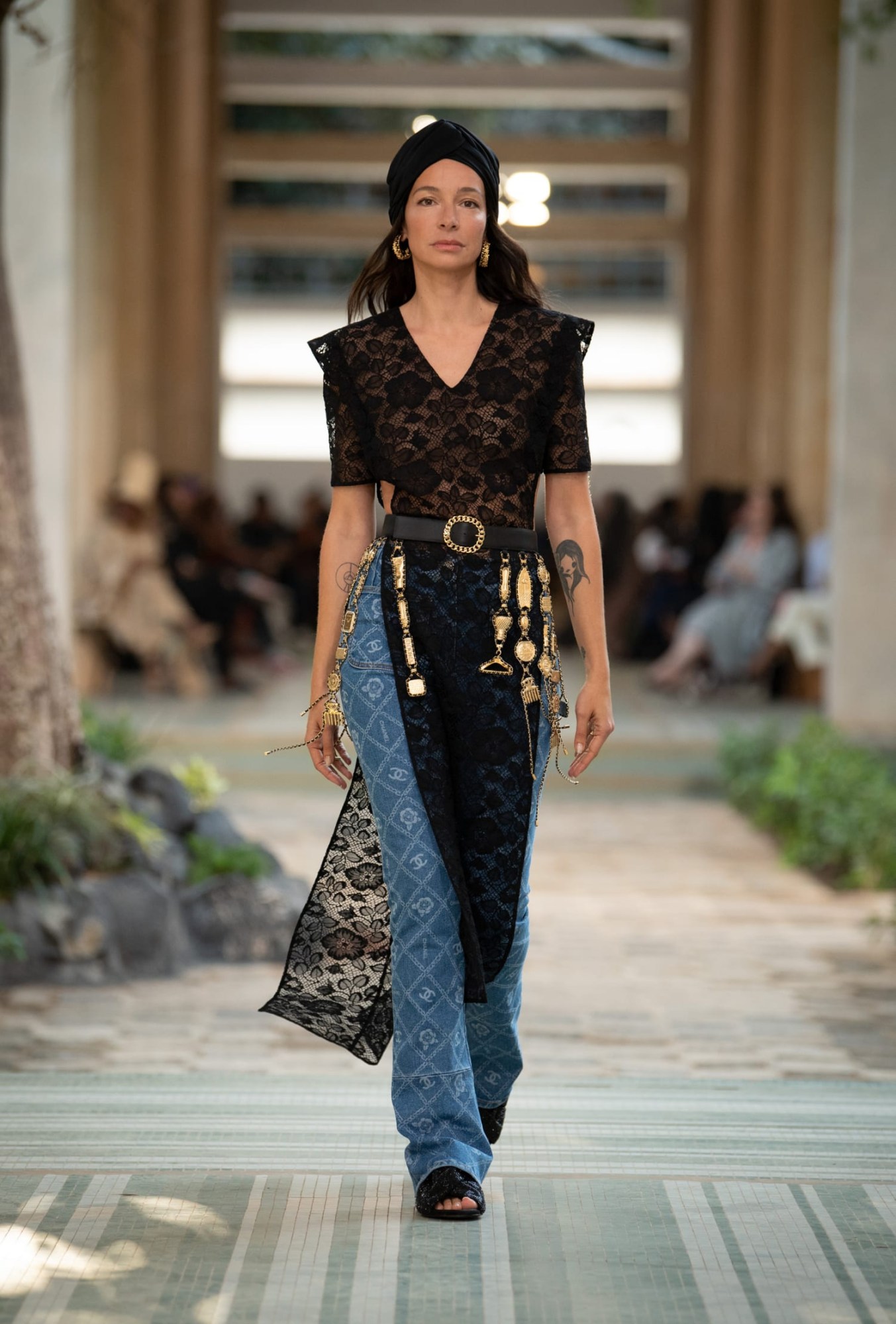
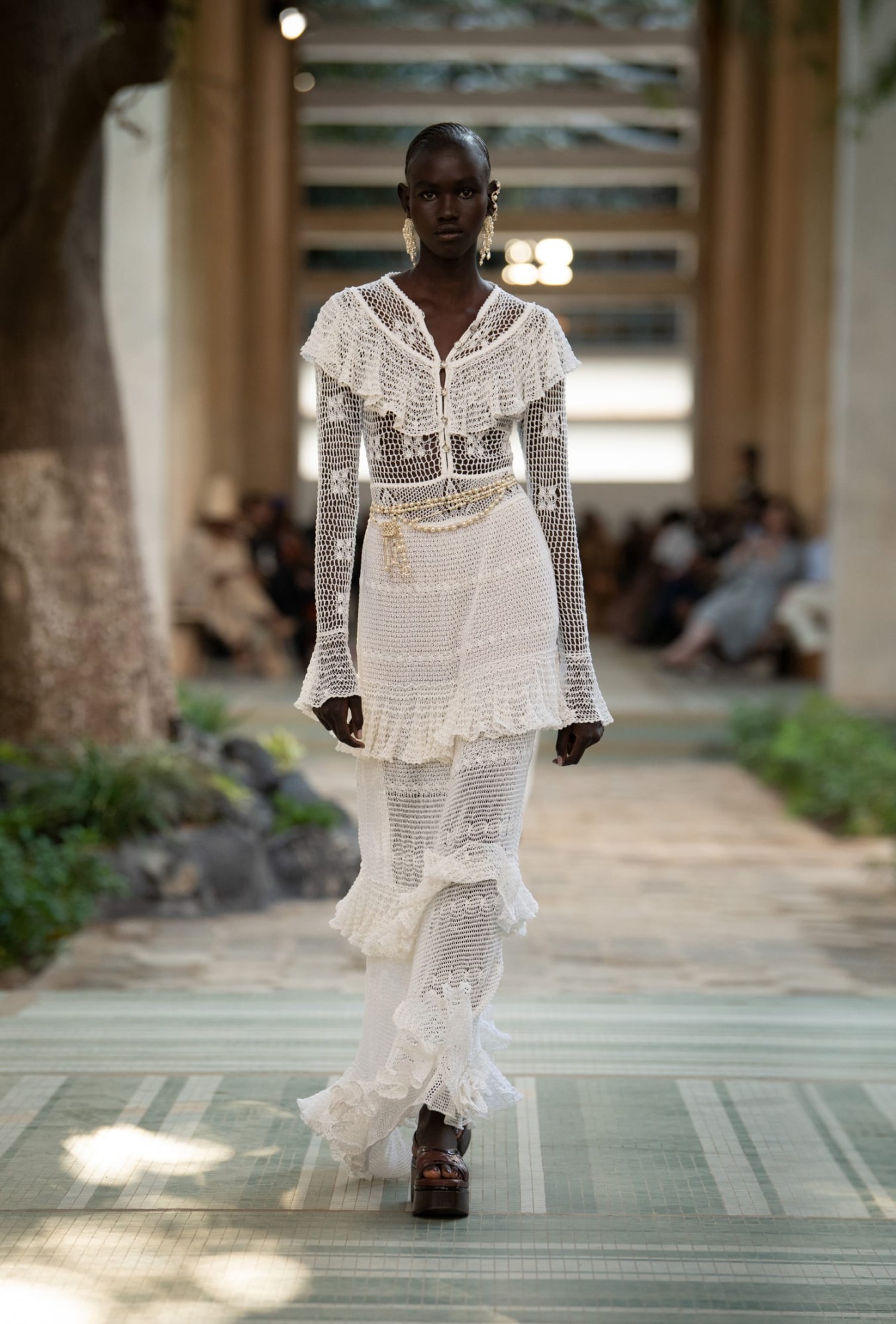

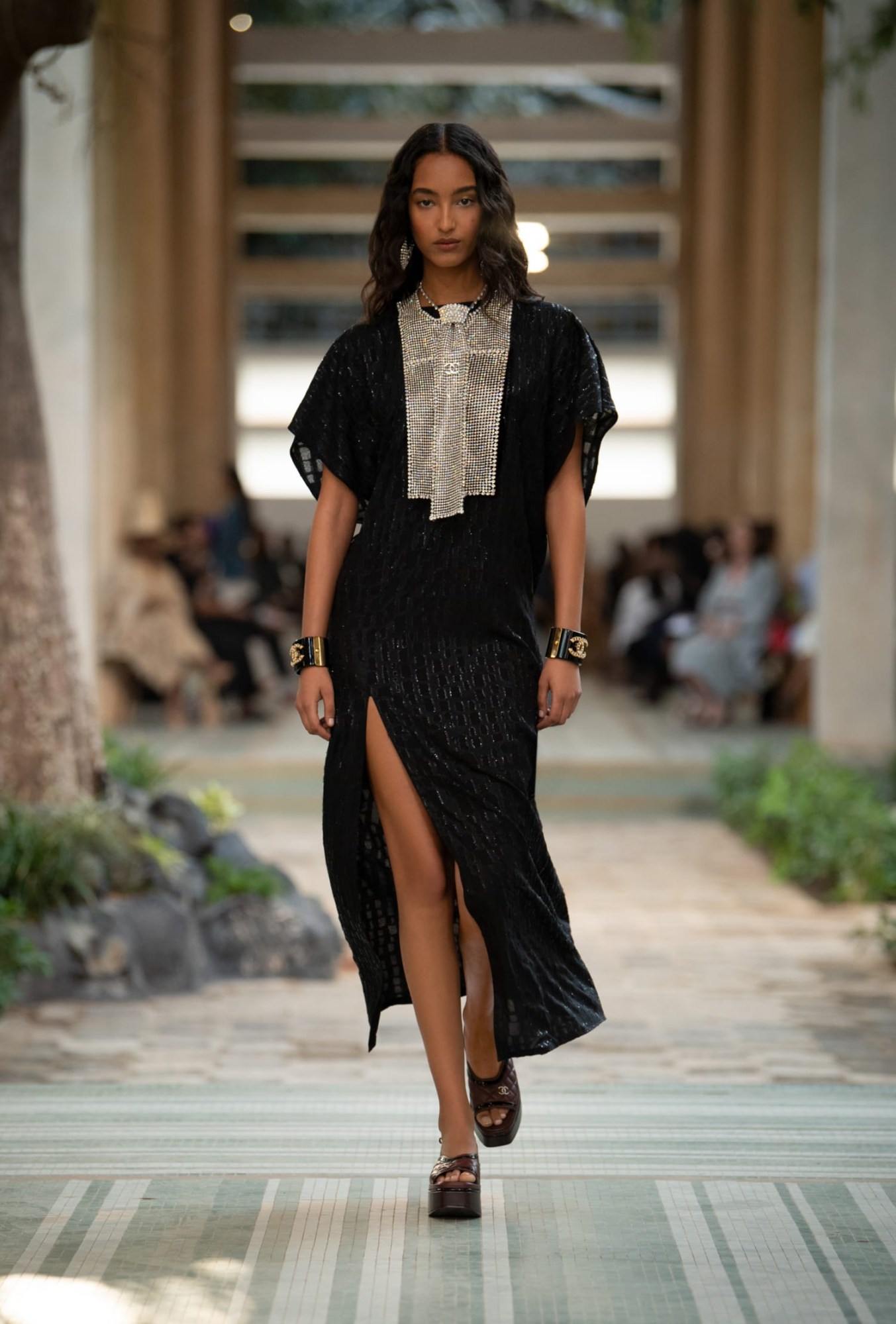
Credits
Images courtesy of Chanel
